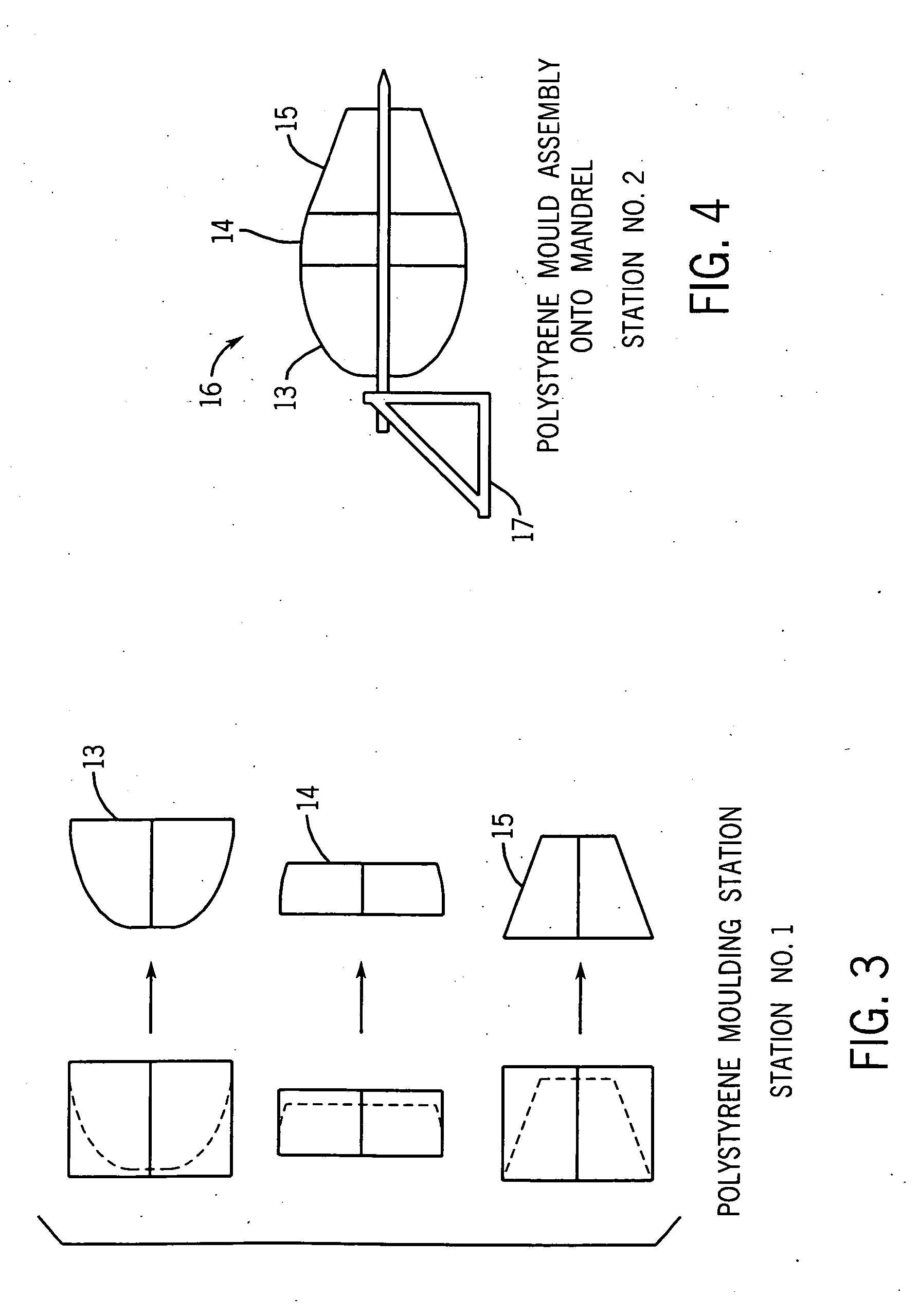Concrete mixing drum manufacturing method
a technology of concrete and manufacturing method, which is applied in the direction of ceramic shaping cores, buttons, chemical/physical processes, etc., can solve the problems of steel drums that are expensive to manufacture, have suffer from a number of attendants, so as to prolong the life of the drum, improve the concrete mixing characteristics, and increase the concrete carrying capacity of the drum
- Summary
- Abstract
- Description
- Claims
- Application Information
AI Technical Summary
Benefits of technology
Problems solved by technology
Method used
Image
Examples
Embodiment Construction
[0070]FIG. 1 shows an elevation view of a known steel mixing drum 1 which is typically constructed from separate prefabricated sections 2, 3 and 4 which are welded together at seams 5, 6 and 7. At seams 5, 6 and 7 the welded joints which are subject to concentrated wear due to the change in surface direction at the joint. The concentrated wear points in the prior art steel drums reduces the working life of the drums necessitating costly repair or replacement. Steel drums are fabricated from rolled flat sheets which form cones and a cylinder which are then joined together by welding. Archimedian spirals are then welded to the inner surface of the drum resulting in a high specific gravity vessel whose self weight reduces the amount of concrete which can be carried by the vehicle to which it is attached. As previously indicated, the steel drums suffer from a number of disadvantages including susceptibility to abrasion at the junctions of the cylindrical and conical sections and the ten...
PUM
| Property | Measurement | Unit |
|---|---|---|
| angle | aaaaa | aaaaa |
| radius | aaaaa | aaaaa |
| tensile strength | aaaaa | aaaaa |
Abstract
Description
Claims
Application Information
 Login to View More
Login to View More - R&D
- Intellectual Property
- Life Sciences
- Materials
- Tech Scout
- Unparalleled Data Quality
- Higher Quality Content
- 60% Fewer Hallucinations
Browse by: Latest US Patents, China's latest patents, Technical Efficacy Thesaurus, Application Domain, Technology Topic, Popular Technical Reports.
© 2025 PatSnap. All rights reserved.Legal|Privacy policy|Modern Slavery Act Transparency Statement|Sitemap|About US| Contact US: help@patsnap.com



